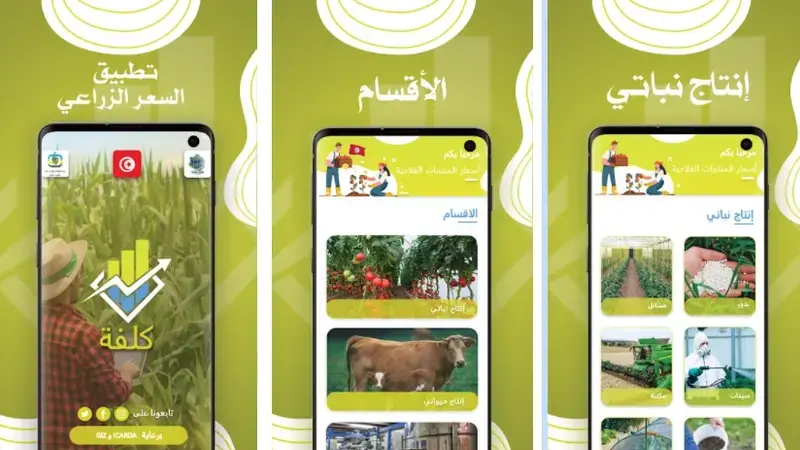New App brings Commodity Prices at Farmers' Fingertips

Kolfa” is a brand-new app which provides commodity price information to Tunisian farmers in near real-time. The bilingual Arabic-French app, now available for free on Google Play Store, has been developed by the ICARDA ICT2Scale team in Tunisia, financed by GIZ with the support of the CGIAR's Research Program on Policies, Institutions, and Markets (CRP PIM), and in partnership with the National Observatory for Agriculture ONAGRI and the IT developer Almanara.
The easy to navigate, picture-heavy interface showcases the prices of up to a hundred different commodities and farm-related products like seeds, fertilizer, and animal feed, enabling farmers to keep up to date with market fluctuations, thereby informing their purchasing decisions.
“Prior to this app, we had set up a paid SMS system through which farmers could obtain market data on a range of 10 products, but it was not very widely used,” explains Mr. Udo Rudiger from ICT2Scale, the agricultural innovation specialist overseeing Kolfa’s development.
“This really made us want to try something different,” he said.
They found out that ONAGRI’s website, which provides statistical data on agricultural products across Tunisia, had price information on a wide selection of agriproducts available online. “We approached them and offered to develop an app, to make this information easily accessible to farmers. They were immediately up for it.”
ICT2Scale partnered up with Almanara to develop the app, and two weeks ago, Kolfa - which means 'cost' in Tunisian Arabic - was released.
In the current pilot phase, the project has provided two tablets to extension agencies to collect data on a monthly basis. CRP PIM and ICT2Scale trained 15 public officers on how to use the Open Data Kit, a simple way to gather and input price data into a smartphone or tablet.
“For some commodities, prices fluctuate and need close monitoring, but for the ones that are subsidized, such as barley, prices are set by the government on a yearly basis,” Udo explained.
Since the data is collected from different local markets, the app provides a price range for the non-subsidized commodities, giving farmers higher negotiation power with commodity traders, and helping them calculate estimated benefits.

